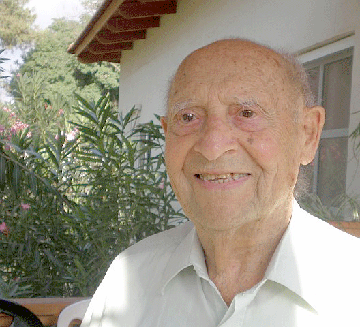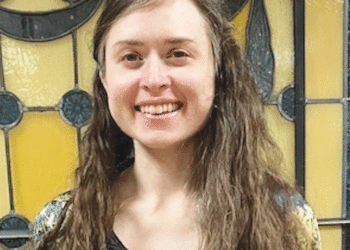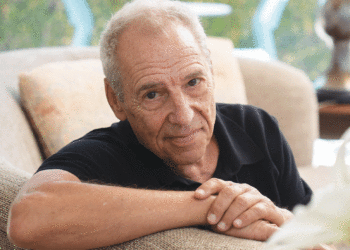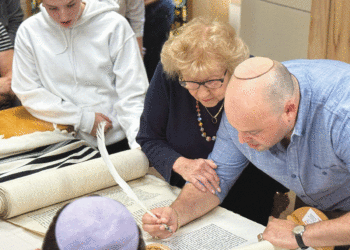Saadia Gelb, a pillar of Kibbutz Kfar Blum in Israel, was the forerunner for a generation of progressive Labor Zionist youth
By MORDECAI SPECKTOR
Many American Jews feel a strong loyalty to Israel, and some even make aliya. And then there was Saadia Gelb.
The former Minneapolis resident, by way of Borislav, Poland, was a founder of Habonim, the Labor Zionist youth movement formed in 1935. In 1947, before Israel was a state, Gelb, his wife, Helen (née Malinsky, also of Minneapolis), and their three children made aliya, and settled on Kibbutz Kfar Blum in the upper Galilee.
Gelb died on Jan. 17. He was 96.
Remembrance
A graduate of North High and the University of Minnesota, Gelb, according to a timeline on a memorial Web site (saadiagelb.com), was employed at Kfar Blum as a “fisherman, [Caterpillar] D8 operator, field worker and storekeeper.” In 1955, Gelb was appointed treasurer and vice chairman of the Upper Galilee Regional Council; and, in 1957, he was elected general secretary of Kfar Blum, and concurrently as general secretary of the Kiryat Shemona Mapai (Israeli Workers Party) branch. (Mapai, David Ben-Gurion’s party, was the dominant force in Zionist politics. It merged into the Israeli Labor Party in 1968.)
 Saadia Gelb at Kfar Blum (Photo courtesy of Gil Mann)
Saadia Gelb at Kfar Blum (Photo courtesy of Gil Mann)
Although he declined to run for a seat in the Knesset, preferring life on the kibbutz, Gelb was a friend of such legendary Israeli figures as David Ben-Gurion, the Jewish state’s first prime minister, and Golda Meir. He met Meir, who lived for a time in Milwaukee, Wisc., in 1932, and they stayed in touch over the years.
Gil Mann, a Golden Valley resident and Gelb’s nephew, recalls that one of his cousins in Israel received a wedding gift from Golda Meir. He told the Jewish World last week that he visited his uncle many times at Kfar Blum, most recently in 2008.
“He was a hero to me, in so many ways…. I’ve always been moved by his idealism, by the sacrifices he made to live his dream, by his devotion to his Judaism, to the Jewish people — to all people,” said Mann. “He cared about injustice wherever he saw it, whether it was to an Arab or to a non-Jew or a Jew.”
Mann added that his uncle “had smicha,” rabbinic ordination.
“He was a brilliant guy,” Mann commented. “He was as conversant in Aristotle as he was in Chaim Nachman Bialik. And he spoke Yiddish and Polish and Hebrew and English. I’ve never met anyone quite like him. Like I say, one of my heroes.”
Harry Lerner, of St. Louis Park, knew Gelb, but was closer in age to his younger sister, Vivian.
“We were all active in Habonim at that time,” Lerner recalled. “Of course, [Gelb] made aliya before anyone else in the community.”
On the Web site for Gelb, Mann posted a letter, in which he noted, “my life would not have occurred if not for [Gelb]. In 1952, my mother [Vivian], who idealized her big brother, followed him because she too wanted to help build the land of Israel. She moved to the then poor town of Beersheva to work with the poorest new immigrants. Uncle Saadia was impressed with her and called her a chalutz [pioneer]. She told me toward the end of her life that she was proud of his pride in her.”¨ My mother’s journey to Israel led her to meet my father, which in turn led to my birth in Israel.”
Lerner mentioned that a number of Jews from the North Side also followed Gelb’s path and made aliya.
“People were always astonished that there were so many people from Minneapolis, Habonimniks, who at that time were so active in the movement.”
He said that a house at 1010 Knox Ave. N. was the local headquarters for Habonim and affiliated Zionist youth groups. The movement is now known as Habonim Dror, “the Builders of Freedom.”
Gelb also authored, with Yosef Criden, The Kibbutz Experience, a popular book in the 1970s. And, in 2001, he wrote an autobiography called The Chase Is the Game.
Lerner also said that he saw a manuscript of a novel Gelb wrote, a story about a murder in a kibbutz.
During his 2008 visit with his uncle at Kfar Blum, Mann, thinking that this would likely be their final time together, took photos of the guesthouse, the Jordan River and other features of the kibbutz.
“I could hear, see, smell and taste memory after memory,” Mann later wrote. “With every breath, I felt as if I was inhaling my past and my present. Each step in this very emotional stroll covered ground that had shaped me in so many ways. ”¨I can sum up all that I have written in a few words. Much of who I am today is because of my Uncle Saadia. How grateful and blessed I am.”
Gelb is survived by two sons, a daughter, 10 grandchildren and 10 great-grandchildren.









 Saadia Gelb at Kfar Blum (Photo courtesy of Gil Mann)
Saadia Gelb at Kfar Blum (Photo courtesy of Gil Mann)








